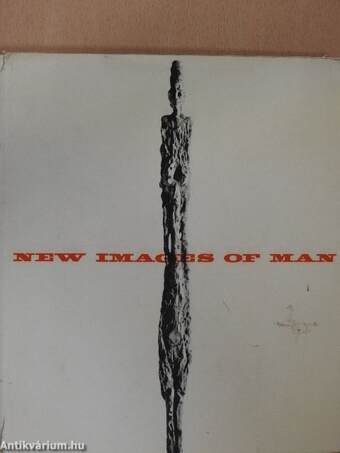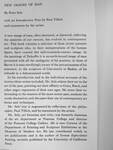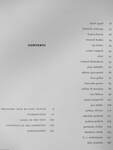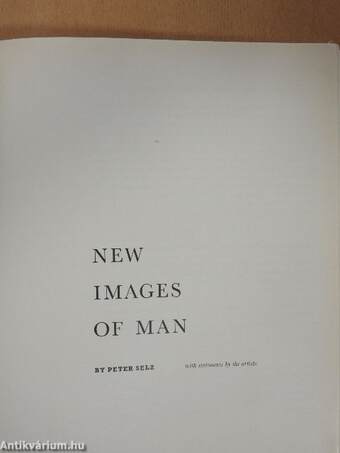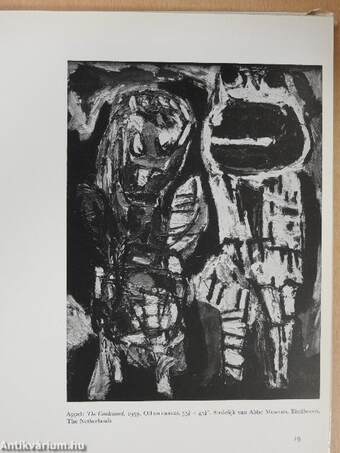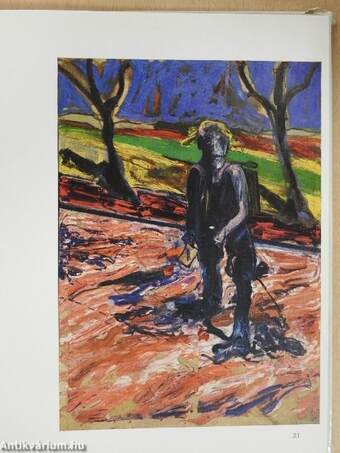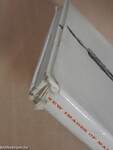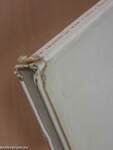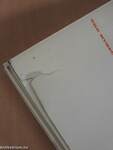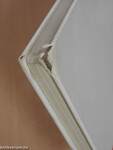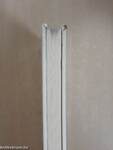1.066.355
kiadvánnyal nyújtjuk Magyarország legnagyobb antikvár könyv-kínálatát

VISSZA
A TETEJÉRE
JAVASLATOKÉszre-
vételek
New Images of Man
| Kiadó: | The Museum of Modern Art-Baltimore Museum of Art |
|---|---|
| Kiadás helye: | New York |
| Kiadás éve: | |
| Kötés típusa: | Fűzött kemény papírkötés |
| Oldalszám: | 159 oldal |
| Sorozatcím: | |
| Kötetszám: | |
| Nyelv: | Angol |
| Méret: | 25 cm x 21 cm |
| ISBN: | |
| Megjegyzés: | Színes és fekete-fehér fotókkal, reprodukciókkal. További kapcsolódó személyek a kötetben. |
naponta értesítjük a beérkező friss
kiadványokról
naponta értesítjük a beérkező friss
kiadványokról
Fülszöveg
NEW IMAGES OF MAN
By Peter Selz
with an Introductory Note by Paul Tillich
and statements by the artists
A new image of man, often shattered, or distorted, reflecting
the anxieties of our century, has evolved in contemporary
art. This book contains a selection of those recent painters
and sculptors who, in their interpretations of the human
figure, have created this mid-twentieth-century image. In
the paintings of Dubuffet it is an earth-bound image of man
presented with all the ambiguity of his position; in those of
Bacon it is man terrifyingly aware of the precariousness of his
existence; in the sculpture of Giacometti or Baskin, of his
solitude in a dehumanized world.
In his introduction and in the individual accounts of the
twenty-three artists included, Mr. Selz relates their art to the
art of the past, pointing out their affinity to Goya, Bosch, and
other angry exponents of their own ages. He notes their re-
lationship to the masters of the more recent past,... Tovább
Fülszöveg
NEW IMAGES OF MAN
By Peter Selz
with an Introductory Note by Paul Tillich
and statements by the artists
A new image of man, often shattered, or distorted, reflecting
the anxieties of our century, has evolved in contemporary
art. This book contains a selection of those recent painters
and sculptors who, in their interpretations of the human
figure, have created this mid-twentieth-century image. In
the paintings of Dubuffet it is an earth-bound image of man
presented with all the ambiguity of his position; in those of
Bacon it is man terrifyingly aware of the precariousness of his
existence; in the sculpture of Giacometti or Baskin, of his
solitude in a dehumanized world.
In his introduction and in the individual accounts of the
twenty-three artists included, Mr. Selz relates their art to the
art of the past, pointing out their affinity to Goya, Bosch, and
other angry exponents of their own ages. He notes their re-
lationship to the masters of the more recent past, analyses the
works themselves and discusses their use of contemporary art
forms and techniques.
Mr. Selz' text is augmented by reflections of the philos-
opher, Paul Tillich, and by statements by the artists.
Mr. Selz, art historian and critic, was formerly chairman
of the art department at Pomona College and director
of the Pomona College Gallery. He is now Curator of the
Department of Painting and Sculpture Exhibitions at the
Museum of Modern Art. He has contributed widely to
art publications and is the author of German Expressionist
Painting, recently published by the University of California
Press. Vissza
Témakörök
- Idegennyelv > Idegennyelvű könyvek > Angol > Művészetek > Festészet
- Idegennyelv > Idegennyelvű könyvek > Angol > Művészetek > Szobrászat
- Művészetek > Festészet > Korszakok, stílusok > XX. század > Egyéb
- Művészetek > Festészet > Idegen nyelv > Angol
- Művészetek > Festészet > Tanulmányok, összefoglalók > Külföldi
- Művészetek > Festészet > Albumok > Külföldi festők
- Művészetek > Festészet > Általános festészet > Története
- Művészetek > Szobrászat > Korszakok > XX. század
- Művészetek > Szobrászat > Idegen nyelv > Angol
- Művészetek > Szobrászat > Tanulmányok > Külföldi
- Művészetek > Szobrászat > Albumok > Külföldi



